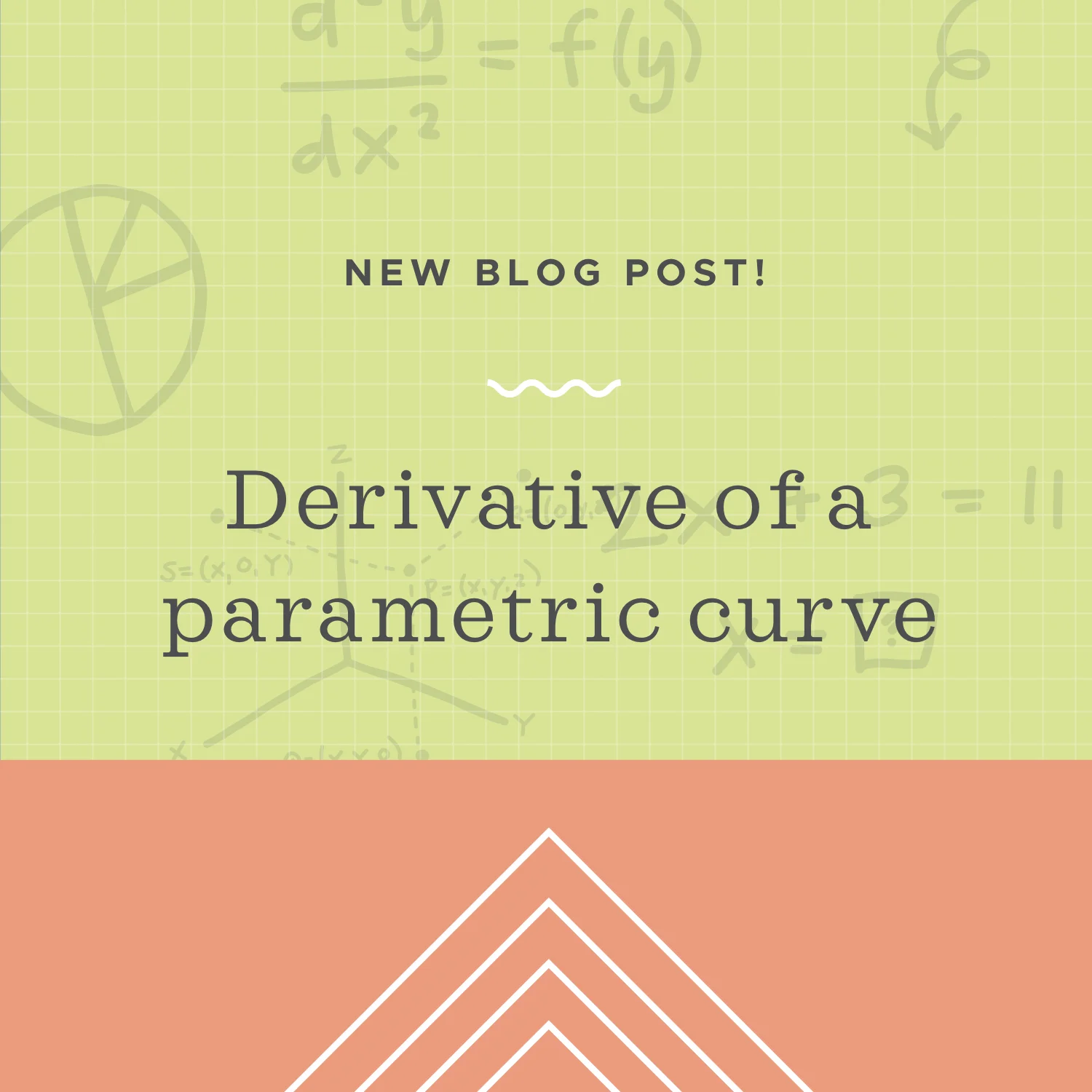You know already how to solve systems of linear equations using substitution, elimination, and graphing. This time, we want to talk about how to solve systems using inverse matrices.
Read MoreSo we can simply calculate the determinant, and then, if the determinant is 0, the matrix is not invertible, so you can’t find its inverse, but if the determinant is nonzero, the matrix is invertible, so you can find its inverse.
Read MoreWhereas partial derivatives are indicated with the “partial symbol,” we never see this notation when we’re dealing with ordinary derivatives. That’s because an ordinary derivative is the derivative of a function in a single variable. Because there’s only one variable, there’s no need to indicate the partial derivative for one variable versus another.
Read MoreIn general, to solve the initial value problem, we’ll follow these steps: 1. Make sure the forcing function is being shifted correctly, and identify the function being shifted. 2. Apply a Laplace transform to each part of the differential equation, substituting initial conditions to simplify. 3. Solve for Y(s). 4. Apply an inverse transform to find y(t).
Read MoreWe can use power series to estimate definite integrals in the same way we used them to estimate indefinite integrals. The only difference is that we’ll evaluate over the given interval once we find a power series that represents the original integral. To evaluate over the interval, we’ll expand the power series through its first few terms, and then evaluate each term separately over the interval.
Read MoreWe can conclude that every span is a subspace. Remember that the span of a vector set is all the linear combinations of that set. The span of any set of vectors is always a valid subspace.
Read MoreA subspace (or linear subspace) of R^2 is a set of two-dimensional vectors within R^2, where the set meets three specific conditions: 1) The set includes the zero vector, 2) The set is closed under scalar multiplication, and 3) The set is closed under addition.
Read MoreAny vector with a magnitude of 1 is called a unit vector, u. In general, a unit vector doesn’t have to point in a particular direction. As long as the vector is one unit long, it’s a unit vector. But oftentimes we’re interested in changing a particular vector v (with a length other than 1), into an associated unit vector. In that case, that unit vector needs to point in the same direction as v.
Read MoreInverse hyperbolic functions follow standard rules for integration. Remember, an inverse hyperbolic function can be written two ways. For example, inverse hyperbolic sine can be written as arcsinh or as sinh^(-1). Some people argue that the arcsinh form should be used because sinh^(-1) can be misinterpreted as 1/sinh. Whichever form you prefer, you see both, so you should be able to recognize both and understand that they mean the same thing.
Read MoreIn order to find global extrema of the function which is defined for a specific set of points, we’ll follow 9 specific steps. This will allow us to find the absolute maximum and absolute minimum points of a particular region.
Read MoreThe center of mass of a region is the single point where the system is balanced. In other words, if you could take the region into physical space and set it on a pencil point, there’s one point in the region where it would balance on that point. Setting it on the pencil at any other point will make the system fall to one side or the another.
Read MoreWe can estimate the average value of a region of level curves by using the formula (1/A(R)) int int_R f(x,y) Delta(A), where A(R) is the area of the rectangle defined by R=[x1,x2]x[y1,y2], and where the double integral gives the volume under the surface f(x,y) over the region R.
Read MoreRectilinear motion problems deal with an object that moves laterally, or horizontally. The object can be moving along the ground or at any other height, as long as it’s moving horizontally. We call this type of motion “rectilinear” motion. Problems like these require you to know the relationship between position x(t), velocity v(t), and acceleration a(t). The important thing to know is that the derivative of position is velocity, and the derivative of velocity is acceleration.
Read MoreTo change an iterated integral to polar coordinates we’ll need to convert the function itself, the limits of integration, and the differential. To change the function and limits of integration from rectangular coordinates to polar coordinates, we’ll use the conversion formulas x=rcos(theta), y=rsin(theta), and r^2=x^2+y^2. Remember also that when you convert dA or dy dx to polar coordinates, it converts as dA=dy dx=r dr dtheta.
Read MoreThe centroid of a plane region is the center point of the region over the interval [a,b]. In order to calculate the coordinates of the centroid, we’ll need to calculate the area of the region first. Then we can use the area in order to find the x- and y-coordinates where the centroid is located.
Read MoreIn this lesson we’ll look at how to solve systems of three linear equations in three variables. If a system of three linear equations has solutions, each solution will consist of one value for each variable. If the three equations in such a linear system are “independent of one another,” the system will have either one solution or no solutions. All the systems of three linear equations that you’ll encounter in this lesson have at most one solution.
Read MoreTo sketch the area of integration of a double polar integral, you’ll need to analyze the function and evaluate both sets of limits separately. Remember, you’ll need to sketch the polar function on polar coordinate axes, where the r values represent the radius of a circle and the theta values will produce straight lines.
Read MoreWhen we study present and future value in calculus, usually we’re trying to calculate the amount a sum of money will be worth in the future after it’s had time to grow and earn interest, or we’re trying to calculate how much money we had in the past given the sum of money in the account today. The present and future value formulas we use will vary depending on the rate at which interest is compounded, and whether we’re calculating the value of a single deposit, or a continuous income stream.
Read MoreYou can use a double integral to find the area inside a polar curve. Assuming the function itself and the limits of integration are already in polar form, you’ll be able to evaluate the iterated integral directly. Otherwise, if either the function and/or the limits of integration are in rectangular form, you’ll need to convert to polar before you evaluate.
Read MoreGiven a parametric curve where our function is defined by two equations, one for x and one for y, and both of them in terms of a parameter t, x=f(t) and y=g(t), we calculate the derivative of that parametric curve using a specific formula for the parametric derivative.
Read More





















